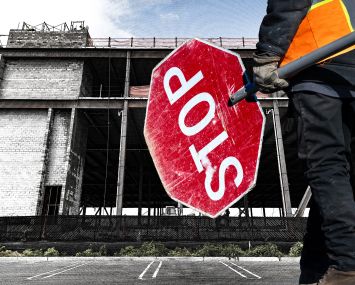The Sun Also Rises: Sunset Park’s Booming Artisanal Economy
By Billy Gray February 12, 2013 9:00 am
reprintsMr. Torres scoured Harlem, the Bronx and New Jersey for potential locations for his chocolate factory before inking a 10-year lease at B.A.T. He was drawn to the monolith by its history, but also by its accessibility—there’s a subway across the street—and the fact that Sunset Park “needed to be redeveloped.”
Even the most idealistic emu egg mayonnaise tradesman would also be drawn to the neighborhood for its relatively cheap real estate. “Honestly, Sunset Park in the last five years has benefited from the fact that light industry has been priced out of places like Long Island City and Williamsburg,” Mr. Bodnar said. “Industrial rents in Long Island City are probably a good 40 to 50 percent—and in some cases 100 percent—higher than in Sunset Park.”
Sunset Park rents, depending on property size and intended use, vary from $6 to $15 per square foot. Public incentives also lure tenants. Mr. Torres, who had never dealt with a city-owned property before, listed low rent, utility costs, taxes and moving expenses, as well as the availability of parking spaces, as among the pragmatic reasons for his leap to Sunset Park. “I’m responsible for build-out, demolition and reconstruction,” Mr. Torres said. “But the city helps with a lot.”
While economics favor area tenants, they pose a challenge to landlords and developers. The Jacques Torres lease aside, many of the tenants cranking out small batches of often expensive niche products lease small spaces. The lion’s share of inventory at B.A.T. comes in 20,000-to-40,000-square-foot servings; the average tech or food startup is in the market for 1,000 or 2,000 square feet. Subdividing space is expensive and often comes at a loss.
“What hinders Sunset Park is that a lot of spaces are large,” Mr. Bodnar said. “The guy who’s making hand-cracked juniper gin in Sunset Park wants 10,000 square feet. But you need guys who are taking down 40,000 or 60,000 square feet at a time.” When it comes to parcels smaller than 10,000 square feet, B.A.T. is 100 percent leased.
As a recent New York magazine cover pointed out, the sustainability of what some deride as Brooklyn’s economy of twee remains to be seen. In Sunset Park, some neighborhood holdouts producing your grandfather’s brawny products—industrial springs, military connectors and backshells—remain. But despite its rebound, deindustrialization’s toll on Sunset Park is clear: between 1960 and 2000, the number of manufacturing jobs plummeted from about 1 million to approximately 200,000.
Like in so many New York neighborhoods, the one constant in Sunset Park is change. It has been known for decades as an exceptionally eclectic emblem of New York’s diversity. Waves of Latino and Asian immigrants led its last renaissance, in the 1980s. According to the Department of Health and Mental Hygiene’s most recent community profile, 49 percent of the neighborhood’s 120,000 residents in 2006 were foreign-born, compared with 36 percent citywide.
But census figures released in 2007 revealed a 17 percent decline from 2000 in the number of residents who did not speak English at home, an indicator of incipient gentrification. Vacancy rates are falling at B.A.T., but it’s less clear whether the job growth is benefiting or marginalizing locals.
“As businesses diversify, you’re getting more people from Manhattan, Brooklyn, even Staten Island and New Jersey,” Mr. Bodnar said. “But I do think it does service a great deal of the local labor pool.”
People familiar with Sunset Park do not see the current improvements running roughshod over the neighborhood’s scrappy immigrant and industrial character. The Sunset Park Vision Plan emphasizes the preservation of an active public waterfront brimming with creativity, manufacturing and—eventually—retail, not luxury residential loft conversions.
Future rezoning could tempt private owners to try to turn the waterfront into the next Battery Park City or Williamsburg. But the brokers, building managers and neighborhood tenants who spoke to The Commercial Observer all thought that Sunset Park would enjoy a revival whose new arrivals burnished the old fabric.
“Everybody wants the latest tech triangle,” Mr. Bodnar said. “And if we wanted to replicate what happened in Dumbo, we’d be focused on 5,000-square-foot leases.”
Mr. Torres, who in 2000 opened his first workshop in Dumbo when the neighborhood was largely devoid of retail, is shocked by that neighborhood’s metamorphosis. Sunset Park, he thinks, will fare differently.
“It will be a better neighborhood, with a more residential feel,” Mr. Torres said. “But those buildings are made to manufacture. They’re talent incubators. The people there have not just found a way to make a living, but a way to live.”


